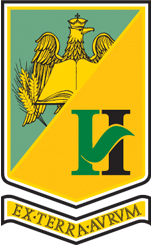Published in Scientific Papers. Series B, Horticulture, Vol. LXVIII, Issue 2
Written by Bianca MUȘAT, Costel VÎNĂTORU, Adrian PETICILĂ, Matilda POPESCU, Geanina NEGOȘANU, Camelia BRATU
In addition to the classic tomato species of Solanum lycopersicum, the main relict genetic resources with a wild character preserved in the germplasm collection of BRGV Buzau are part of the following subspecies: Solanum torvum, Solanum caripense, Solanum melanocerasum, Solanum quitoense, Solanum mamossum, Solanum sisymbriifolium, Solanum nigrum. Of these, Solanum sisymbriifolium is the genotype that clearly expresses the authenticity of a wild tomato, in its ancestral form, as it was known since ancient times. The species was phenotypical, qualitative, and quantitative evaluated at the BRGV Buzau, obtaining a new variety being under approval and named Matilda. The plant has yellow-brown aggressive thorns with an average height of 14.5-15.4 mm on the entire vegetative part, both on the stem, as well as on the shoots, leaves, inflorescence. The berry-type fruit, with an average weight of 7.6 g, is encapsulated in a persistent calyx ornamented with thorns. It is used in intraspecific and interspecific hybridizations, using the rusticity of the species, noting that it grows and fruits well in extreme temperature conditions, having a high capacity to adapt to thermo-hydric stress.
[Read full article] [Citation]




